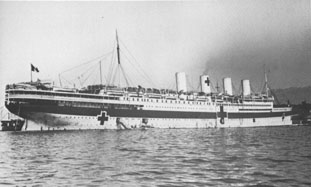Mostyn is wounded! In a post written some time after the event he describes his experience:
Enemy send over T.M.s into our trenches. Went on right post again at night. Bulgars send down party to bomb post. They landed one bomb amongst us, wounded me in the abdomen & thigh. Had a terrible journey down to F.A., spent the night there & was taken in motor to 31st Clearing Station at Janis. Operated on immediately. The first 7 days were terrible, great pain & continuous injections of morphia, but after this period became much better.
He mentions the 31st Clearing Station at Janis. Although some hostpital admissions and discharge records still exist, the ones for the period of Mostyn Williams admission do not seem to be among them (for details, see post on ‘The Long, Long Trail” site). It is likely that Mostyn’s experience was similar to that of so many others who were wounded. See, for example, the artilcle about the evacuation chain for wounded and sick soldiers on the Long, Long Trail website.

Casualty clearing station, The Battle of Arras, April-May 1917© IWM (Q 6195)
A Short Guide To Medical Services During The First World War (by Matt Brosnan, available on the Imperial War Museum website) gives a useful introduction to the medical service during the war. For a detailed account, the book Medical services; general history (1921) may help. A digitised copy is available online through the Internet Archive. Volume 4 covers the Salonica campaign (and more). The film ‘The Wonderful Organisation of the RAMC‘ (1916) has been digitised and can be viewed on the Imperial War Museum website.



